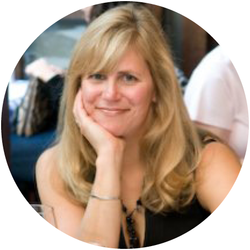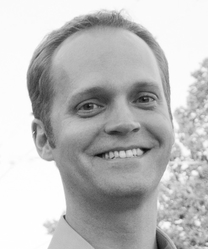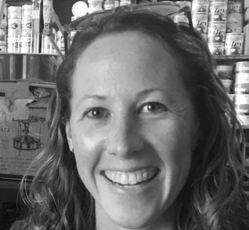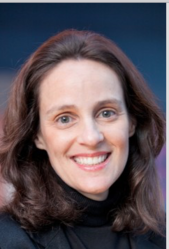It was almost a ritual, but one that regularly disrupted the parenting class at a San Francisco-based child abuse prevention organization.
Every time a siren blared in the streets below, a female participant bolted out of the room to seek safety in the windowless interior rooms of the multilevel labyrinthine white Victorian that houses Safe & Sound.

And it didn’t just happen in the parenting class. “When she heard the fire trucks, she said she would become paralyzed, float off to another world and not be able to engage with her kids anymore,” says Molly Jardiniano, Safe & Sound’s director of children’s and family services and who runs the parenting programs. That was especially a problem, because the blare of police and fire sirens regularly cut through the urban din in the woman’s San Francisco, CA, neighborhood, explains Jardiniano. She and her colleagues later learned that the woman’s reaction was tied to traumatic experiences in her childhood that were linked to the sound of sirens.
This parent’s experience is an example of the neurobiological effect of adverse childhood experiences (ACEs) that can stretch into adulthood. The link between ACEs and physical and mental health issues as an adult has been the subject of research that began in 1998 with the groundbreaking CDC/ Kaiser Permanente ACE Study, which linked 10 types of childhood trauma with health outcomes in adults.
Those include witnessing or being subject to physical violence in your immediate family, being emotionally or sexually abused, experiencing hunger, or lacking basic necessities like soap to clean or proper-fitting clothes, or having a parent who uses drugs, suffers mental illness, or has been incarcerated.
Subsequent ACEs surveys include racism, being homeless, experiencing deportation, and living in an unsafe neighborhood or a war zone.

This mother’s reactions to sirens and the way it affected her parenting is an example of the types of experiences that weigh down the lives of families who walk through the doors of Safe & Sound, according to Malcolm Gaines, the senior director of clinical projects. Trauma, he says, is a common denominator among those they serve: ”I would say that [affects] 99 percent – almost to a person,” he says.
That Safe & Sound staff zeroed in on this mother’s adverse childhood experience is reflective of the organization’s approach to preventing child abuse: If you want to ensure that a child is safe, you have to consider what kind of support their parent might need and also how well they can weather any kind of stressful or trying time.
For the staff to be better prepared to deal with triggers that their clients experience, every staff member “from the Talk-line volunteer [a 24-hour help line], all the way up to the board,” has been trained in ACEs science and trauma-informed practices, including understanding how trauma affects the brain, according to Gaines, who is one of the organization’s two trauma-informed trainers.
Safe & Sound’s goal is to reverse the various forces within a family that can lead to child abuse, and, in so doing, save millions of taxpayer dollars that now make up San Francisco’s budget related to child abuse. In a 2017 report, for example, Safe & Sound calculated that San Francisco doles out a stunning $301.6 million related to child abuse; the Bay Area spends $2.2 billion. (See also this story about the report.)
While it’s hard to quantify the reduction in expenditures that the organization’s services offset, it has made inroads by rolling out a new model in 2013 based on measuring progress in preventing child abuse by how well families have integrated five protective factors. The five protective factors, developed by the Washington, D.C.,-based Center for the Study of Social Policy, include resilience among parents, social connections, an awareness of child development and parenting, and their children’s social and emotional skills.

Of the more than 3,185 families Safe & Sound has served at its Waller Street office since the 2013 launch, around 305 were identified as being especially at-risk for child abuse. To counter that, they receive intensive therapy as well as education about parenting and child development, typically over an 18-month period, according to Safe & Sound’s Communications Officer Lauren Reid, who said around 80 percent have strengthened their parenting skills and supports. Twenty-seven of those families no longer require such services.
Safe & Sound also provided safety training to 8,722 kindergarten to 5thgrade students, and 95 percent of their teachers agreed that the training was effective, according to its most recent annual report.

Whatever progress the organization has made, Executive Director Katie Albright says anecdotally that clients have said that outside pressures have made building up a good support system much more challenging. “They’re actually saying that policies in Washington are making it harder to move forward. They are specifically citing issues around immigration and concerns around systems of oppression, and immigration is probably the biggest area.”
As far as making a difference in San Francisco, Safe & Sound’s goal is to end child abuse in San Francisco in 50 years. From 2008 through 2017, the number of children living in San Francisco has increased by about 20,000 to more than 127,000, according to the California Child Welfare Indicators Project (CCWIP). From April 2008 to March 2018, the number of reports of child abuse has hovered around 5,000, and verified incidents of child abuse in San Francisco have dropped from 1,107 to 498, according to data from the CCWIP. (The incidence of child abuse and neglect is likely underreported, according to a report by Safe & Sound.)
Albright is very clear that ending child abuse is only possible with collaboration. “Our goal is to take the work that we’re doing, the individual one-on-one work with families, and partner with other family resource centers and share the framework and metrics of how you think about this measurement outcome system in a different way. Because that will change our practice and there are 25 different family resource centers, so we can reach a certain number of kids, but as a whole we could reach 10,000 children and that math begins to really change the system.”
Along with an interest in new collaborations and a new model, Safe & Sound, formerly called the San Francisco Child Abuse Prevention Center, was ready for a name shift to reflect its broader vision. “Each and every day we work to create a society where children are safe, families are strong, and communities are sound,” wrote Albright in a blog post about the name change.
While helping some clients explore their adverse childhood experiences, the organization has for now decided not to offer the ACE survey to clients. Instead, it educates them about ACEs on a case-by-case basis. “A family may not be ready to make those kinds of disclosures when they walk into a family resource center,” says Gaines.
Instead of ACEs screening, Gaines explains, education about ACEs may occur in a parenting education group or in a therapy session. “When there’s a family, a parent or a kid, if old enough, in therapy who’s dealing with trauma symptoms, that kind of conversation can have such explanatory power: ‘I’m not having symptoms because I’m crazy, I’m having them because of what happened in my life.’” (Read this story for an example of how a parenting education program successfully incorporated ACEs screening and education.)
One way Safe & Sound captures a family’s stresses is in the initial intake interviews done with new clients interested in the array of services the organization offers, including parenting and education classes, parenting support groups, counseling one-on-one and anger management, respite child care and weekly community dinners. Clients of Safe & Sound hear about the organization from friends, the organization’s child abuse prevention hotline, other community groups, their doctor’s office, and some are referred by Child Protective Services, according to Reid.
While Safe & Sound does not ask clients to fill out the 10-question ACE survey for themselves or their children, a general ACE question can enter into the intake interview.
“One question might be, what happened in the history of your family that might be affecting how you’re parenting right now?”
Intake data culled from clients’ initial interviews and other questionnaires elicit ACEs experienced by the parents or their children. For example, 10 percent of the 200 parents who filled out the intake questionnaires between January 2016 and December 2017 answered ‘yes’ to a question about whether there was child abuse in their family of origin. Some 39 percent of parents disclosed that there had been past or current violence within the family; around 5 percent said they were actively using substances, and more than 12 percent said they have a mental health diagnosis “with significant current clinical impairment or distress.” (See the attached pdf for more details.)
Those answers help Safe & Sound determine potential risk factors for child abuse. To get a fuller picture of their protective factors, says Gaines, they also ask parents to rate how resilient they are and their strengths and challenges as parents by indicating how strongly they identify with statements such as “I stay patient when my child cries,” and “I know where to go if my child needs help,” “I believe that my life will get better even when bad things happen.” And, “I have someone I can ask for help when I need it.”
Whether or not parents have specific requests from staff for parenting help, respite from childcare, counseling or building up a support system, Gaines says the staff reviews those surveys to help each parent seeking services identify their goals. Every three months, explains Gaines, they go over those goals with parents.
The mother who equated sirens with danger is one example of a client who benefitted from Safe & Sound’s services, although the change was gradual. “Every time she would hear sirens and react, we’d give her some tools,” says Jiardiano. Those tools included reminding her to breathe. “She’d say to herself everything’s going to be ok – so she could take care of her kids.” Then the woman was able to use the same tools with her children.
“When her kids were reactive, she began teaching them how to breathe,” explains Jiardiano. “So over time we got to see that she began building the relationship with her kids.”





Comments (0)